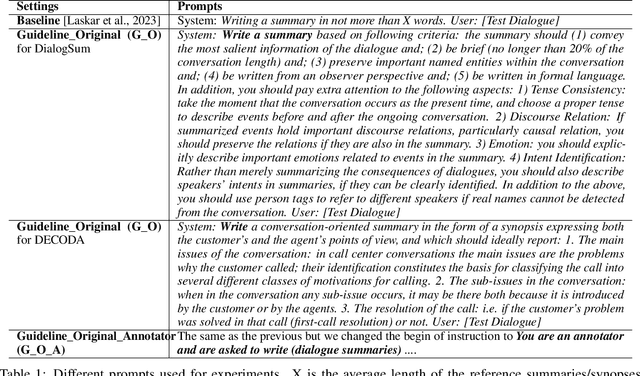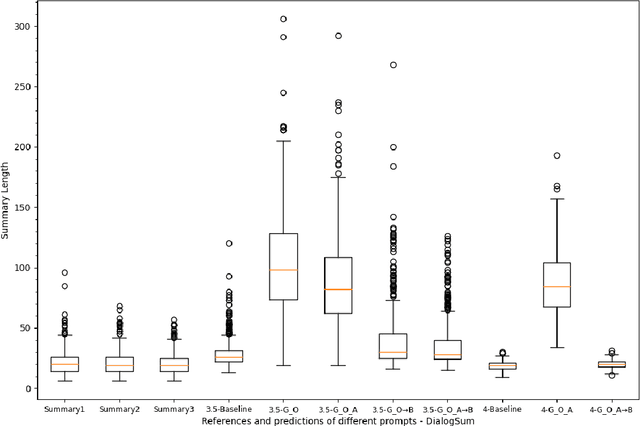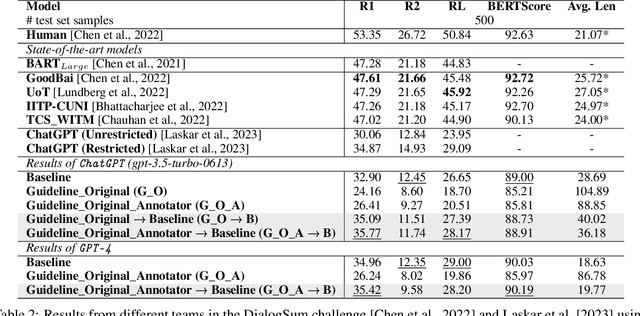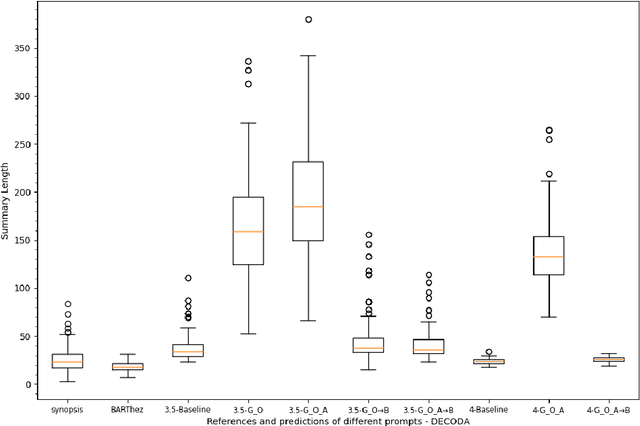Can GPT models Follow Human Summarization Guidelines? Evaluating ChatGPT and GPT-4 for Dialogue Summarization
Paper and Code
Oct 25, 2023



This study explores the capabilities of prompt-driven Large Language Models (LLMs) like ChatGPT and GPT-4 in adhering to human guidelines for dialogue summarization. Experiments employed DialogSum (English social conversations) and DECODA (French call center interactions), testing various prompts: including prompts from existing literature and those from human summarization guidelines, as well as a two-step prompt approach. Our findings indicate that GPT models often produce lengthy summaries and deviate from human summarization guidelines. However, using human guidelines as an intermediate step shows promise, outperforming direct word-length constraint prompts in some cases. The results reveal that GPT models exhibit unique stylistic tendencies in their summaries. While BERTScores did not dramatically decrease for GPT outputs suggesting semantic similarity to human references and specialised pre-trained models, ROUGE scores reveal grammatical and lexical disparities between GPT-generated and human-written summaries. These findings shed light on the capabilities and limitations of GPT models in following human instructions for dialogue summarization.
 Add to Chrome
Add to Chrome Add to Firefox
Add to Firefox Add to Edge
Add to Edge